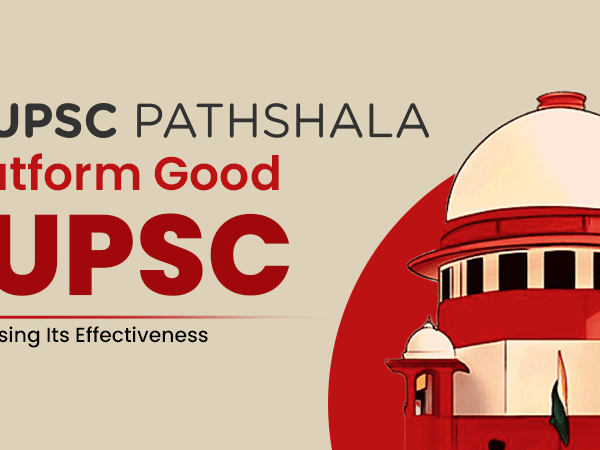The Indian Administrative Service (IAS) officer is considered to be one of India’s most prestigious and attractive occupations. There are a lot of ups and downs in the life of an IAS officer, it’s not easy to become an IAS officer at all. An IAS officer is known for his responsibility, which could lead to major changes in public life, and not many people have this power. You will learn things like what does an IAS officer do? And will get insights into their life like what is the work of an IAS officer or how much they earn and much more.
What does an IAS Officer Do? What are the IAS Officer Roles and Responsibilities?
The key work of IAS officers includes the formulation and implementation of policies related to a specific region, e.g. finance, trade, etc.
- IAS officials at different levels, such as the Joint Secretary, Deputy Secretary, etc., are active in the planning and decision-making process. They give their inputs and give the policies a final design.
- At the local and state level, officials are primarily concerned with district affairs, such as the implementation of development projects.
- The IAS officer also manages districts during natural calamities such as floods, tsunamis or violent protests, etc. In such a case, IAS officers help state or central government, by keeping them updated with the current scenario and ensure that the government takes proper steps.
Read Also: Which Stream is Best for IAS after the 10th?
What Post Does an IAS Officer Get?
Here is a list of job positions for IAS officer:
- Sub-divisional officer- He /she is responsible for the various development activities taking place in the sub-division. The role of the Subdivisional Officer is to organise the work of the different departments.
- Divisional Commissioner- The Divisional Commissioner coordinates all tasks related to the general government, including law and order, revenue management at the divisional level.
- District Magistrate/Collector- The District Magistrate is responsible for handling the administration of the district. He/she is the key agent for the requisite coordination of the official agencies operating within the district.
- Chief Secretary- The Chief Secretary helps maintain inter-departmental coordination. He/she is the chairperson of the coordination committees formed to settle inter-departmental conflicts.
- Cabinet Secretary- The Cabinet Secretary is the Chief Coordinator of the Central Government. It acts as a link between the political system and the civil services of the country. The Cabinet Secretary is responsible for overseeing and managing the activities of different ministries and departments.
Here is the Salary Listed for Different Positions of an IAS Officer
|
Number of years required in service | Post | |
| District Administration | |||
| 10 | 56100 | 1-4 | Sub-Divisional Magistrate |
| 11 | 67,700 | 5-8 | Additional District Magistrate |
| 12 | 78,800 | 9-12 | District Magistrate |
| 13 | 1,18,500 | 13-16 | District Magistrate |
| 14 | 1,44,200 | 16-24 | Divisional Commissioner |
| 15 | 1,82,200 | 25-30 | Divisional Commissioner |
| 16 | 2,05,400 | 30-33 | No Equivalent Rank |
| 17 | 2,25,000 | 34-36 | No Equivalent Rank |
| 18 | 2,50,000 | 37+ years | No Equivalent Rank |
IAS Working Days and Hours
There is no guarantee about the working hours of the IAS officer. While the usual office hours remain as 9–5 hours, the work does not stop there in a job like a civil service. You will have lots of reports to complete, certain security situations may occur at any time or natural disasters, meetings, conferences, attending official events and reports of the various offices under their authority. There are some leaves that officers get. For example, they get eight casual leaves, 30 earned leaves, and 20 half pay leaves. For women, they get maternity leave for 180 days whereas men get paternity leave for 15 days.
What Can an IAS officer do for Society
- You can make the electoral process better by enforcing strict laws and ending bad practices such as bribery, voter intimidation, etc.
- You can initiate programs for poor and malnourished kids and provide adequate infrastructure as well.
- You can assist disabled kids by involving them in productive activities. For example, you can help them in setting up cafes and contribute to their earning.
- You can fight for child marriages in your area and create awareness of the repercussions of child marriage.
- You can do something creative for example in some areas it is difficult for an ambulance to reach so you can create campaigns such as motorbike ambulances that can easily reach geographical constraint places and are also inexpensive.
- You can also clear up acres of land used for dumping the garbage in an economical way. The cleared land than can be used for other activities such as for playing golf and much more.
Can IAS Officer Do Business?
The rules of conduct forbid IAS officers from working in any other full-time profession. Even for a part-time vocation, there should be no legal issue. The vocation must also be non-profitable. However, in the past, there have been IAS officers who have left their positions and have started their own business and turned into entrepreneurs.
Conclusion
The life of an IAS officer is also hectic and fascinating. They are the ones who have the real power to bring about the desired change in society and to enable the underprivileged to have their rights in a true sense.
Also Read: IAS Preparation Tips for Beginners






